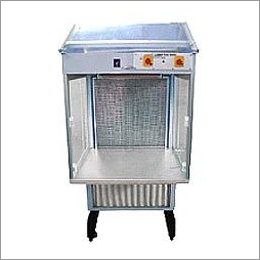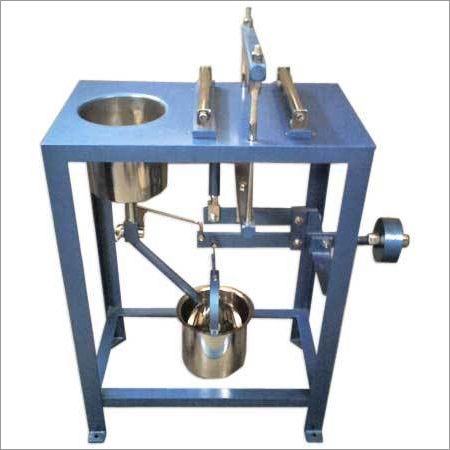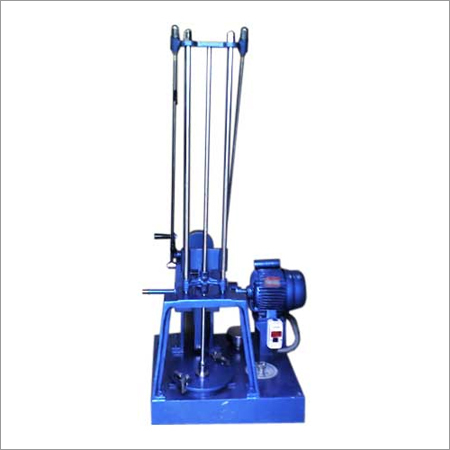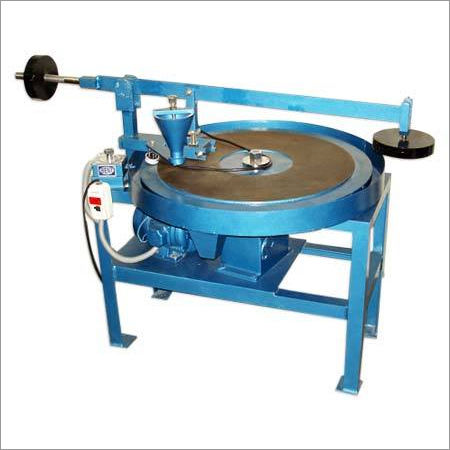Triaxial Shear Apparatus
Triaxial Shear Apparatus Specification
- Machine Type
- Bench Mounted
- Surface Treatment
- Powder Coated and Polished
- Control System
- Manual / Digital Strain Control
- Features
- Corrosion Resistant, Rigid Construction, Interchangeable Cells, Easy Sample Assembly
- Technology
- Mechanical Plunger System with Load Frame
- Power Source
- Manual or Electrical (for digital variant)
- Accuracy
- 0.5%
- Accessories Type
- Pressure Gauge, Porous Stones, Rubber Gaskets, Pedestal, Loading Pad
- Operating Pressure
- Up to 10 kg/cm
- Type
- Triaxial Shear Apparatus
- Material
- Mild Steel and Borosilicate Glass Cylinder
- Application
- Soil Mechanics Laboratory Testing
Triaxial Shear Apparatus Trade Information
- Minimum Order Quantity
- 1 Number
- Supply Ability
- 04 Per Month
- Delivery Time
- 3-8 Week
About Triaxial Shear Apparatus
Triaxial Shear Apparatus
We have carved a special niche in both the domestic and international markets with our unmatched range of Triaxial Shear Apparatus. Designed to perfection at our state of art machining facility, these apparatuses are mainly used for measuring the mechanical properties of soil and granular materials. Low maintenance, study construction and easy operation are some of the main attributes of our Triaxial Shear Apparatus. Furthermore, we also offer these apparatus at an economical price.
Accurate Soil Testing for Research and Industry
Our triaxial shear apparatus delivers exceptional accuracy (0.5%) for soil analysis, accommodating varied sample sizes (38 mm to 100 mm) and supporting up to 50 kN of vertical load. It is designed for rigorous laboratory environments where reliable results are paramount for academic studies, industrial applications, and quality assurance in civil engineering.
Features Designed for Efficiency and Safety
Equipped with interchangeable cells and clear cylinder walls for real-time observation, this apparatus streamlines the testing process. Safety is assured with a pressure relief valve, while corrosion-resistant construction offers longevity. Accessories suppliedincluding trimming tools, compaction equipment, porous stones, rubber gaskets, pedestals, and loading padsaid in seamless setup and operation.
Compliance and Precision Engineering
Built to meet Indian and international standards such as IS: 2720 (Part XII) and ASTM D2850/D4767, the equipment undergoes surface treatment for durability and employs mild steel alongside borosilicate glass. Whether operated manually or with an electrical digital control system, it provides consistent and reproducible test results for soil characterization.
FAQs of Triaxial Shear Apparatus:
Q: How does the triaxial shear apparatus ensure accurate soil testing results?
A: The apparatus incorporates a mechanical plunger system with a robust load frame and precision strain control (manual or digital), achieving an accuracy of 0.5%. It is equipped with pressure gauges and clear observation cylinders, ensuring meticulous test conditions in soil mechanics experiments.Q: What is the process for preparing soil samples for testing in this apparatus?
A: Sample preparation involves using included trimming tools and compaction equipment to shape the specimen to the required diameter (38 mm to 100 mm). Accessories such as porous stones, rubber gaskets, and pedestals are provided to ensure correct assembly before subjecting the sample to load.Q: When should I use this apparatus in laboratory settings?
A: The triaxial shear apparatus is ideal for soil mechanics laboratories when detailed soil behavior analysis under controlled conditions is required, such as in geotechnical engineering studies, quality control, and research projects adhering to IS: 2720 and ASTM standards.Q: Where can this apparatus be installed and operated?
A: Designed as a bench-mounted machine, it can be installed in any suitably equipped soil mechanics laboratory. Its relatively compact assembly (approx. 45 kg) allows convenient placement and easy integration into standard lab workspaces.Q: What safety mechanisms are included during operation?
A: Safety features consist of a pressure relief valve to prevent over-pressurization and a transparent borosilicate glass cylinder for direct observation and enhanced operator security during tests.Q: What are the benefits of using interchangeable cells and corrosion-resistant construction?
A: Interchangeable cells allow testing a range of different sample sizes efficiently, while the corrosion-resistant, powder-coated, and polished surfaces ensure longevity and reduced maintenance over time, making the apparatus reliable and cost-effective.Q: How is the control system operated: manually or digitally?
A: The triaxial shear apparatus offers both manual and digital strain control, enabling operators to select the most suitable option for their testing requirements. The digital variant may also run on electrical power, delivering enhanced precision and data acquisition.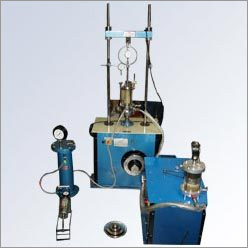

Price:
- 50
- 100
- 200
- 250
- 500
- 1000+
More Products in Civil Engineering Instruments Category
Laminar Air Flow
Price Range 10000.00 - 600000.00 INR / Number
Minimum Order Quantity : 1 Number
Machine Type : Workstation
Surface Treatment : Powder Coated
Application : Laboratory, Pharmaceutical, Research, Medical
Technology : Laminar Flow Technology
Tile Flexure Testing Machine
Price Range 10000.00 - 600000.00 INR / Number
Minimum Order Quantity : 1 Number
Machine Type : Bench Top
Surface Treatment : Powder Coated Finish
Application : Used in Ceramic and Construction Material Testing
Technology : Manual Mechanical Loading
Automatic Compactor
Price Range 10000.00 - 600000.00 INR / Number
Minimum Order Quantity : 1 Number
Machine Type : Automatic Soil Compactor
Surface Treatment : Powder Coated
Application : Civil Engineering; Construction Material Laboratories
Technology : Automatic Compaction Mechanism
Tile Abrasion Testing Machine
Price Range 10000.00 - 600000.00 INR / Number
Minimum Order Quantity : 1 Number
Machine Type : Automatic
Surface Treatment : Powder Coated
Application : Testing of Floor and Wall Tiles
Technology : Mechanical
Factory Address :
Plot No 47, Emerald Indl Estate, Kidc Indl Area, Deku Village, Khalapur Taluk,
Khopoli Raigad, Maharahtra

 Send Inquiry
Send Inquiry
